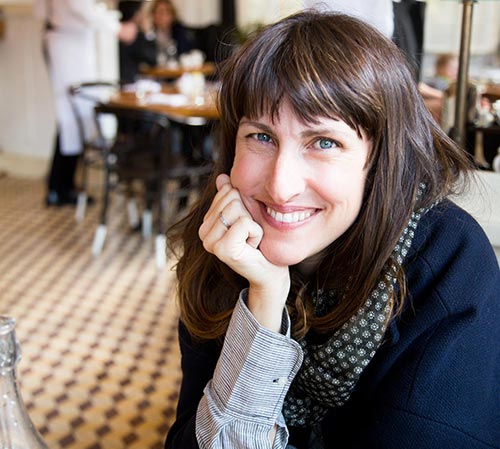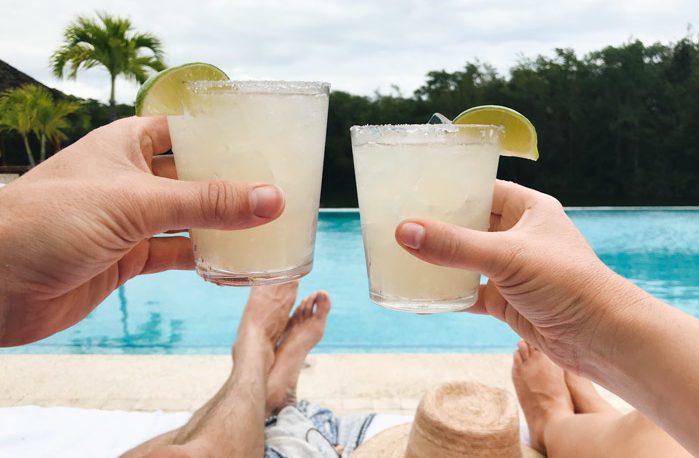
Recently, I tried something called The Whole 30—“a short-term nutrition reset, designed to help you put an end to unhealthy cravings and habits, restore a healthy metabolism, heal your digestive tract, and balance your immune system” and get you eating real food: meat, seafood, eggs, vegetables, fats, fruits… whole, unprocessed foods without long ingredient lists.
The idea is to cut things like sugar, grains, dairy and legumes, that may negatively affect the way you feel, and push reset on your metabolism. A hot button word is “inflammatory” foods. The promise is a change in your relationship with food, and maybe anything from higher energy levels to better sleep, lower weight to a “sunnier disposition.” I had doubts about that last one in particular.
But I was intrigued. Both Aron and I had just listened to an interview with Gary Taubes, who wrote The Case Against Sugar, and “Is Sugar Toxic?” and found his case very compelling.
Here’s the deal…
You’re encouraged to get the book, The Whole30, but here’s what you avoid for 30 days:
No added sugar, real or artificial. No maple syrup, honey, Splenda… none of it.
No alcohol, in any form.
No grains. No wheat, rye, barley, oats, corn, rice, millet, bulgur, sorghum, quinoa, amaranth, bran… nada.
No legumes. Green beans, sugar snap peas, and snow peas, excepted. And no peanut butter, either. This also includes all forms of soy – soy sauce, miso, tofu, tempeh, edamame…
No dairy. (There goes my sunny disposition.) Ghee or clarified butter is okay.
No additives like carrageenan, MSG, or sulfites.
What happened?
Aron and I did it together, which made it much easier to stick to the rules. We did the shopping together and planned out meals. Neither of noticed any major changes to our bodies, however, which seemed surprising considering all of the restrictions! In fact, I was a little frustrated that I didn’t see any weight loss benefits. A few pounds would have been nice after all that effort, as it’s benefit many seem to see after the 30 days.
But I did learn a few things that still made it a worthwhile process.
What I learned.
There is a crazy amount of added sugar in everything! I thought I was a good label-reader before, but I would have never thought to look at sugar content in items like mustard. Cutting sugar isn’t just about cutting dessert; it’s added everywhere.
It’s easier to eat well when you have a plan. I would look at menus ahead of time and have snacks in mind, rather than letting myself be surprised—and this was the key to avoiding temptation. You can eat fresh fruits and vegetables, lean proteins, eggs, healthy fats, and nuts/nut butters.
Routines are helpful. People complain that the Whole 30 involves too much cooking, but a few routines made it easier. For example, Aron would soft-cook eggs in the morning and leave a couple for me to have at lunch. That routine eliminated some element of choice and made things simpler. That salad up top—with avocado, poached eggs, arugula, and olive oil—was an easy go-to.
It’s dangerous to be hungry at 3pm. See above. Plans and routines helped here, but I really found myself wanting to overdo it on nuts around this time. It’s clearly a time I need to distract myself from the pantry.
Grab-and-go items are crucial to my life. What I missed most, while on the Whole 30, were convenience foods and satisfying grab-and-go snacks. These seemed hard to come by on the Whole 30. (Did you have favorites?) My plan would need to involve plenty of snacks.
If you want to eat better, clear out the junk. My willpower against sweets is about as low as my six-year-old’s.
It was easier to say “no thank you” with the Whole 30 excuse. In a way, this was most interesting to me. The Whole 30 isn’t a diet, but it has many of the rules that a diet has—without the stigma. I’ve done diets and low-carb regimens before and it can be hard to say you’re trying to lose weight, or you’re on a diet. Maybe it’s just me, but it always felt like it was supposed to be a secret. It was so much easier to bring our own food to an outing or decline dessert with the explanation “I’m trying the Whole 30.” People were curious about it, and it was easier to talk about restricting sugar than restricting calories.
Would I do it again?
Yes, but with fewer restrictions. Even though I didn’t see the changes that many experience, I really appreciated the mindfulness that came with cutting sugar for the month. I don’t have a problem with dairy; a few glasses of wine a week seem fine to me; and cutting soy seemed extreme. But whether or not sugar is the villain Taubes suggests it is, there’s no need for so much of it to be hiding in my pantry.
Have you tried it? What did you think? What changes did you witness?
P.S. The time I tried a juice cleanse.







































21 Comments